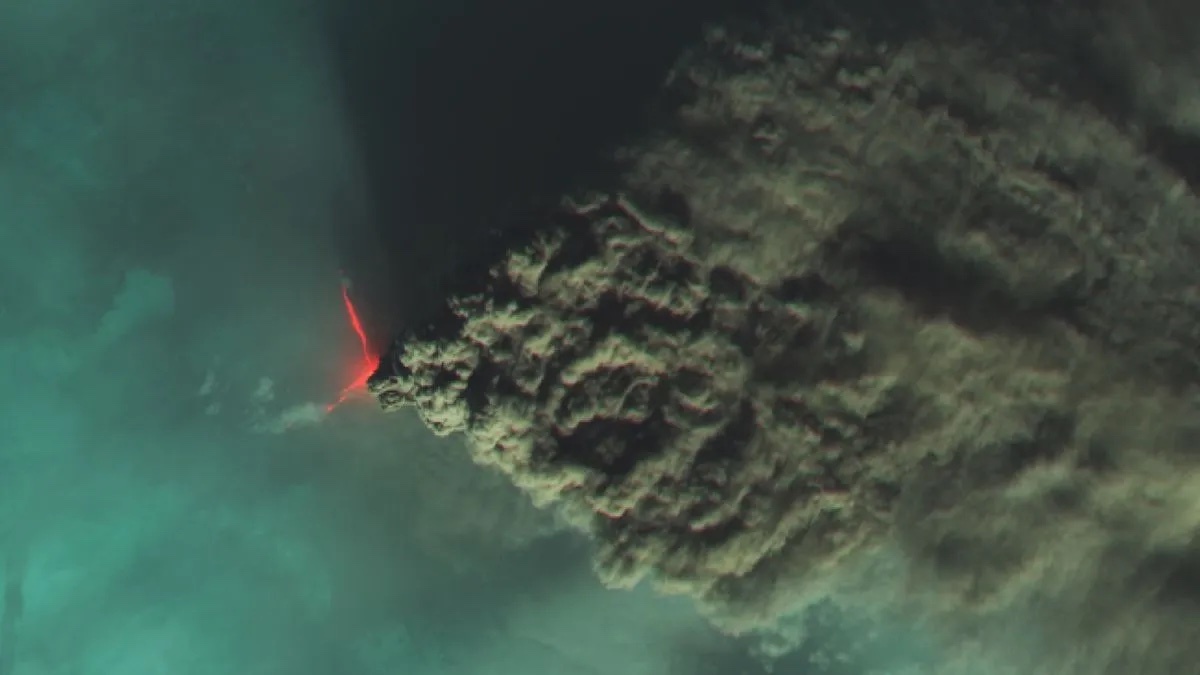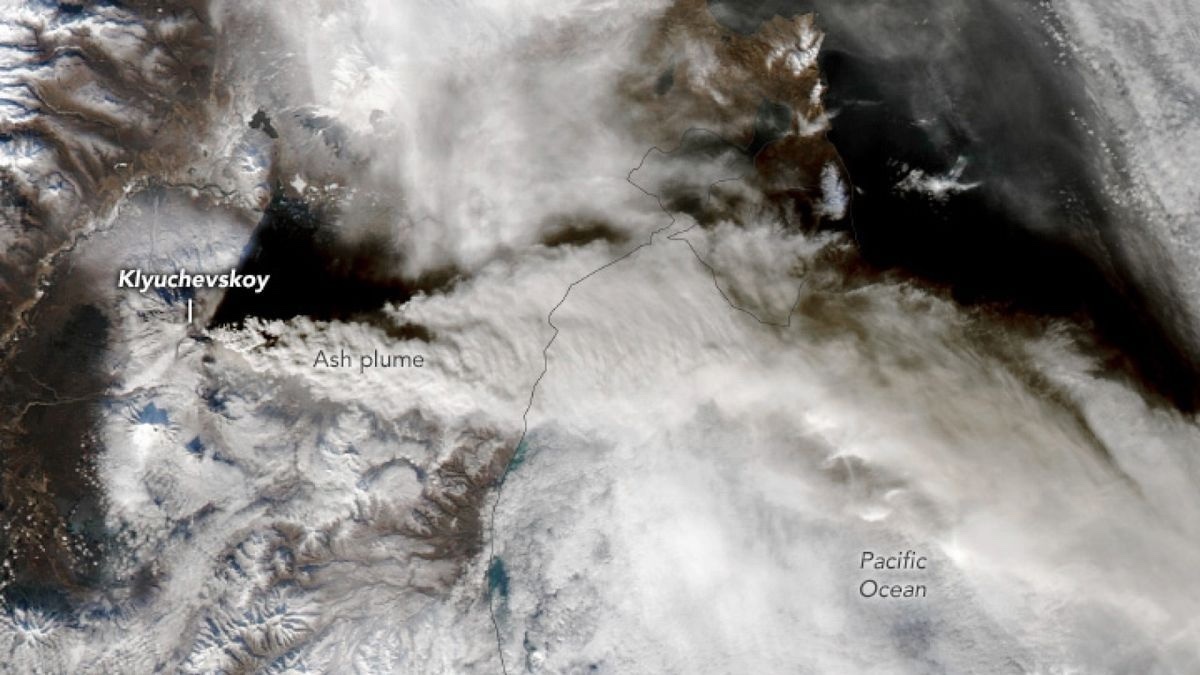21.11.2023
Russia's Klyuchevskoy volcano, which is the tallest volcano in Europe and Asia, violently erupted on Nov. 1 and left behind a trail of smoke and ash that was photographed by NASA satellites.

Image credit: NASA Earth Observatory/Wanmei Liang and Lauren Dauphin)
Eurasia's tallest volcano has violently erupted, throwing a 1,000-mile-long (1,600 kilometers) cloud of dust and ash into the air, new NASA satellite images show.
Klyuchevskoy, sometimes referred to as Klyuchevskaya Sopka, is an active stratovolcano in Russia's Kamchatka Peninsula, which is home to more than 300 other volcanos. Klyuchevskoy's peak stands at 15,584 feet (4,750 meters) above sea level, making it taller than any other volcano in Asia or Europe, according to the Kamchatka Volcanic Eruption Response Team (KVERT).
Klyuchevskoy has been continually erupting since mid-June. But on Nov. 1, a massive volcanic explosion released a torrent of smoke and ash, which reached a maximum height of 7.5 miles (12 km) above Earth's surface, according to NASA's Earth Observatory.
The smoke and ash plume prompted KVERT to temporarily raise the aviation alert level to red (the highest possible level), which grounded planes in the area. Several schools were also evacuated due to the increase in air pollution.
The Landsat 8 satellite, which is co-run by NASA and the U.S. Geological Survey, captured a striking false-color image of the eruption plume (shown above), in which the red lava plume and grey smoke stand out against the surrounding blue-colored clouds.
NASA's Aqua satellite also captured a wider true-color image of the plume (shown below), which shows that the river of smoke was around 1,000 miles long at the time. But the plume may have eventually stretched up to 1,400 miles (2,255 km) long, according to the Smithsonian Institution's Global Volcanism Program.

A zoomed out photo of the eruption plume in real color. Although it is hard to distinguish from the cloud, the plume stretches right across this image from Klyuchevskoy out into the Pacific Ocean. (Image credit: NASA Earth Observatory/Wanmei Liang and Lauren Dauphin)
The outburst only lasted for a few days, and it now appears that Klyuchevskoy may have stopped erupting altogether, according to KVERT.
The Kamchatka Peninsula is part of the Pacific Ring of Fire — a 25,000-mile-long (40,200 km) tectonic belt that circumscribes the Pacific Ocean and contains around three-quarters of the world's active volcanos.
The Ring of Fire has also recently been active in other areas: On Oct. 30, an underwater volcanic eruption off the coast of the Japanese island Iwo Jima birthed a brand new tiny island of hardened magma, which can also be seen from space.
While the trail of smoke and ash given off by Klyuchevskoy was enormous, it is still quite a way off some of the largest eruption plumes ever seen.
The tallest eruption plume in recorded history was the towering pillar of smoke, ash and water vapor from the eruption of Tonga's underwater volcano in January 2022, which rose to 35.4 miles (57 km) above sea level.
Following the Tonga eruption, scientists warned that the record amount of water vapor it released into the stratosphere could weaken the ozone layer. And in September this year, scientists partially attributed the eruption as the cause of an unusually large ozone hole above Antarctica.
However, Klyuchevskoy's latest eruption plume will likely have no real impact on the ozone layer because it contained much less water vapor and did not reach as high up in the atmosphere.
Quelle: SC

